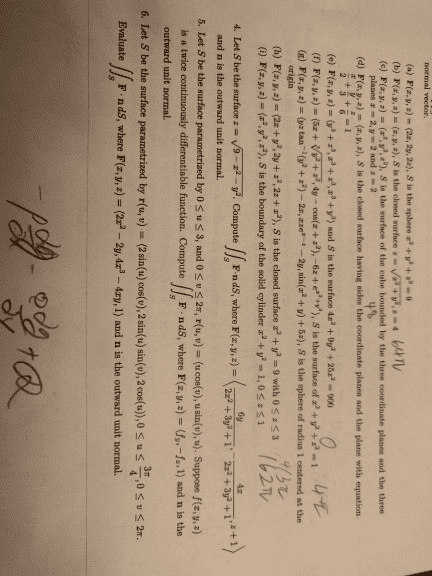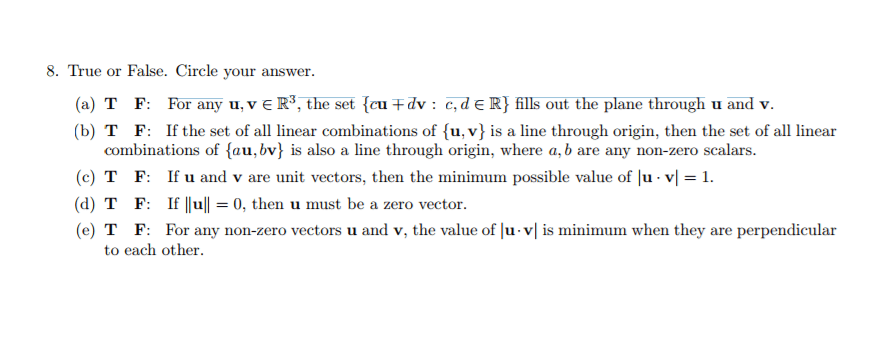MATH 2015 Study Guide - Midterm Guide: Directional Derivative, Partial Derivative, Cross Product

The projection of vonto uis given by
projvu=u·v
v2v(1)
The cross product of any two vectors u×vexists if
u·(u×v) = v·(u×v) = 0 (2)
The equation of a plane πthrough points Ris
n·(hx, y, zi − ri) = 0 for n= (r12 ×r13) (3)
A plane ωorthogonal to πhas a normal vector
nω=nπ×q12 (4)
The arc length of a vector function r(t) is
L=Zb
a
r′(t)dt (5)
The unit tangent, unit normal, and unit binormal are
respectively
T(t) = r′/r′N(t) = T′/T ′B(t) = T×N(6)
The curvature of a function is
κ(t) = T′(t)
r′(t)=|r′(t)×r′′(t)|
[r′(t)]3(7)
A function is continuous given
lim
x,y→0,0f(x, y) = lim
r→0f(r, θ) = f(0,0) (8)
where (x, y) = (rcos θ, r sin θ).
A second partial derivative of a function f(x1, x2) is
fx1x2=∂2f
∂x1∂x2
=∂
∂x1∂
∂x2(9)
The directional derivative of a function fat a point
x0in direction of vis
Dvf(x) = ∇f(x)·ˆ
v=k∇fkcos θ(10)
where the maximum rate of increase of fis ∇f(a, b)
in direction of ∇f(a, b).
For a function f(x) where xi=xi(s, t), the derivative
df
dt =X∂f
∂xi
·dxi
dt (11)
A function fis differentiable at (a, b) if
lim
x,y→a,b fx(x, y) and lim
x,y→a,b fy(x, y) (12)
exist. The linear approximation at such point is
L(x) = f(x0) + ∇f(x0)·(x−x0) (13)
and the quadratic approximation is
Q(x) = L(x) + 1
2(x−x0)THx0(x−x0) (14)
For f(x), the derivative
dxi
dxj
=−∂f/∂xi
∂f/∂xj
(15)
∇f=∂
∂xi+∂
∂y j+∂
∂z k Hx0,(i,j)=∂2f
∂xixj
x0(ab)ij =
m
X
k=1
aikbkj
1
find more resources at oneclass.com
find more resources at oneclass.com
Document Summary
The projection of v onto u is given by where (x, y) = (r cos , r sin ). projvu = u v v2 v (1) A second partial derivative of a function f (x1, x2) is. The cross product of any two vectors u v exists if fx1x2 = The directional derivative of a function f at a point x0 in direction of v is. The equation of a plane through points r is n (hx, y, zi ri) = 0 for n = (r12 r13) (3) Dvf (x) = f (x) v = k f k cos (10) where the maximum rate of increase of f is f (a, b) A plane orthogonal to has a normal vector in direction of f (a, b). n = n q12. The arc length of a vector function r(t) is. For a function f (x) where xi = xi(s, t), the derivative df dt.




